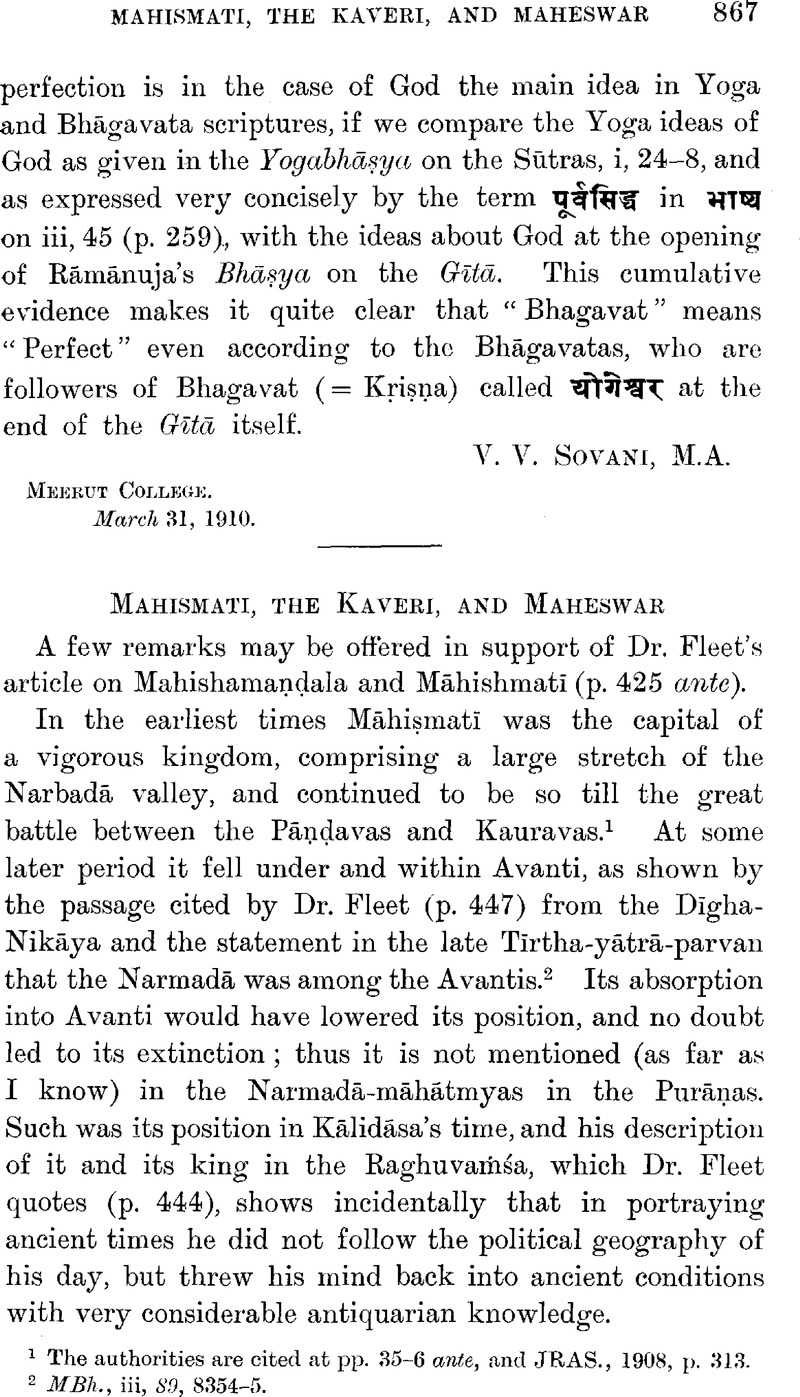No CrossRef data available.
Article contents
Mahismati, the Kaveri, and Maheswar
Published online by Cambridge University Press: 15 March 2011
Abstract

- Type
- Miscellaneous Communications
- Information
- Copyright
- Copyright © The Royal Asiatic Society 1910
References
page 867 note 1 The authorities are cited at pp. 35–6 ante, and JRAS., 1908, p. 313.
page 867 note 2 MBh., iii, 89, 8354–5.
page 868 note 1 22, 46 and 64.
page 868 note 2 Matsya, Ānandāśrama ed., 189; Calc. ed., 188. Padma, i. 16. Its sanctity is supported there with a legend about Kuvera.
page 868 note 3 ii, 37, 16 and 22.
page 868 note 4 ii, 39, 40–1.
page 868 note 5 113, 3.
page 868 note 6 See Hunter, Imp. Gaz., “Mandhāta.”
page 869 note 1 Malaya, Ānandāśrama ed., 188, 1–2 and 82 (Calc. ed., 187). Padma, i, 15, 1–2 and 71. These two accounts are very closely alike. The word sthāia is noteworthy and significant. It could hardly be applied to an ancient city, but rather suggests a new place.




